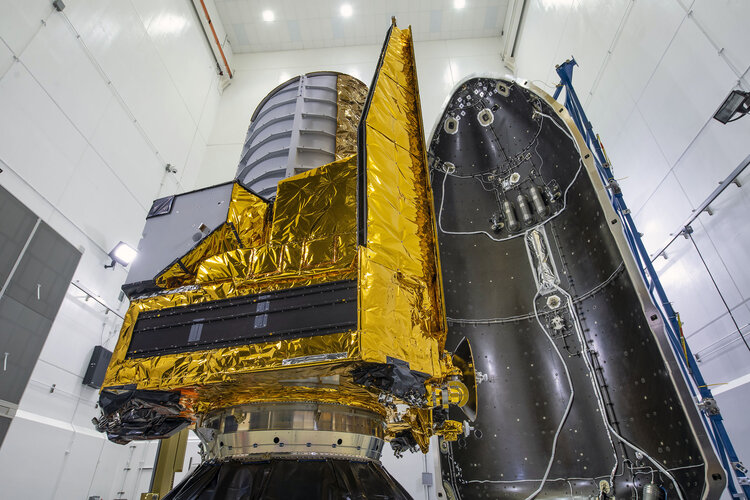On 27 June, this last glimpse of ESA’s Euclid space telescope was caught right before it was encapsulated by a SpaceX Falcon 9 fairing, meaning that the nose of the rocket was installed over the spacecraft.
Euclid is 4.7-m tall and 3.7-m in diameter, fitting nicely in the Falcon 9 fairing with height of 13.1-m and width of 5.2-m.
The Euclid satellite is getting ready for the target launch date of 1 July 2023 from Cape Canaveral in Florida, USA. The Falcon 9 fairing will keep Euclid safe and clean during the last days before lift-off and it will protect the spacecraft against Earth’s atmosphere during launch. Euclid’s telescope and instruments are extremely sensitive and must be kept very clean. To protect them from degradation during launch a special request was made for a brand-new fairing.
ESA's Euclid mission is designed to explore the dark Universe and uncover the great cosmic mystery of dark matter and dark energy. The space telescope will create the largest, most accurate 3D map of the Universe across space and time by observing billions of galaxies out to 10 billion light-years, across more than a third of the sky. This wealth of new data will chart how matter is distributed across immense distances and how the Universe has expanded, revealing more about the role of gravity and the nature of dark energy and dark matter.



 Image:
Image: